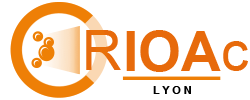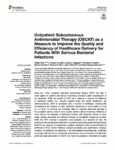Outpatient Subcutaneous Antimicrobial Therapy (OSCAT) as a Measure to Improve the Quality and Efficiency of Healthcare Delivery for Patients With Serious Bacterial Infections
Since the 1970s, outpatient parenteral antimicrobial therapy (OPAT) has been a
viable option for patients who require intravenous antibiotics when hospitalization is
not warranted. While the benefits of OPAT as a measure to improve the efficiency
of healthcare delivery (i.e., reduced hospital days) and patient satisfaction are
well-documented, OPAT is associated with a number of challenges, including line
complications and reliance on daily healthcare interactions in some cases at home
or in a clinic. To minimize the continued need for intensive healthcare services in
the outpatient setting, there is trend toward patients self-administering antibiotics at
home without the presence of healthcare workers, after adequate training. In most
cases, patients administer the antibiotics through an established intravenous catheter.
While this OPAT practice is becoming more accepted as a standard of care, the
potential for line complications still exists. Outpatient subcutaneous antimicrobial therapy
(OSCAT) has become an increasingly accepted alternative route of administration of
antibiotics to IV by French infectious diseases physicians and geriatricians; however,
currently, no antibiotics are approved to be administered subcutaneously. Antibiotics
with longer half-lives that are completely absorbed and have a favorable local tolerability
profile are ideal candidates for OSCAT and have the potential to maximize the quality and efficiency of parenteral antibiotic delivery in the outpatient setting. The increasing
development of wearable, on-body subcutaneous delivery systems make OSCAT even
more viable as they increase patient independence while avoiding line complications and
potentially removing the need for direct healthcare professional observation.



